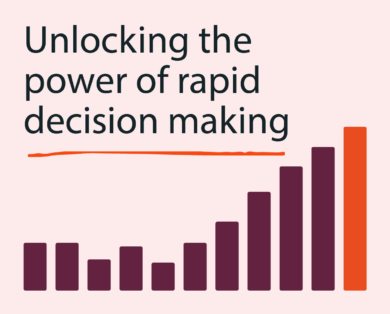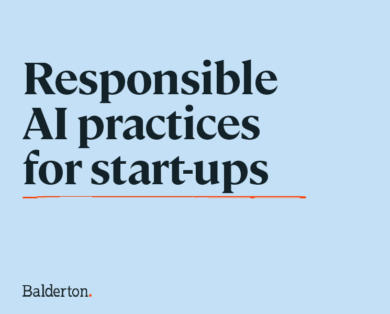- 09 April, 2025
Have you ever been to a board meeting where 60 minutes were allocated on the agenda for discussion of a strategic topic? What happened in that session?
- You probably started late because board meetings are hard to keep on time.
- Some exec, maybe the CEO, probably presented a “few slides” to “tee up” the discussion.
- “A few” turned out to be 23.
- Two or three questions were asked by the one board member closest to the topic. The others said nothing.
- Time ran out because you needed to get to the administrative section, approving prior-meeting minutes and such.
- Everyone politely said, “great job,” but left the meeting frustrated.
This happens a lot. Execs who dysfunctionally view survival as the goal of a board meeting might be happy with this outcome.
Think: “We survived another one; now, let’s get back to work.” For those execs, however, who actually want to both tap into the board’s expertise and build board-level consensus on a strategic topic, this is a terrible outcome. No expertise was tapped. No consensus was built (except perhaps that the company doesn’t run good board meetings).
So what went wrong and what should we do about it?
What Goes Wrong in Strategic Board Discussions
Startup boards are a tough audience. They are homogenous in some ways: everyone is typically smart, outspoken, successful, and aggressive. That means leading any discussion is cat-herding.
But, when it comes to strategic discussions, the board is heterogenous in three critical dimensions:
- Operating experience
- Technology understanding
- Financial knowledge
Startup boards are typically VC-dominated because, as a startup goes through the A, B, C, and D series of funding rounds, it typically adds one VC board member per round. Thus the typical, sub-$100M startup board has 1-2 founders, one VC for each funding round, and one or possibly two independents.
Patagonia vests aside, not all VCs are alike.
When it comes to operating experience, VCs generally fall into one of three different categories:
- Deep operating experience. Former founders, who founded, grew, and eventually sold their companies, or highly successful 10+ year executives from brand-name companies. In high school, members of the former group were in the programming club. You’ll find these people working at early-stage VC firms.
- Moderate operating experience. People who worked for roughly 4 to 10 years, often in product but sometimes in sales or corpdev, at a larger tech company, often with an MBA sandwiched in the middle. Often they studied CS or engineering undergrad. In high school, they were in the entrepreneurship club. You’ll find these people at a wide range of VC firms.
- Finance/consulting experience. People who typically majored in economics or finance (sometimes CS), worked for 2 to 4 years in banking, management consulting or at a tech firm, attended a top business school, joined a VC firm as an associate, and then worked (usually hard and against the odds) their way up to partner. In high school, they were in the investing club. You’ll find these people at later-stage VCs and funds.
Independent board members come in different flavours as well:
- General managers. Active or former CEOs of startups and/or business unit GMs at big companies. These people typically have a good overview of the business and know the functional area they grew up in, these days typically sales or product.
- Go-to-market executives. Active or former sales or marketing leaders, i.e., CROs or CMOs. These people understand go-to-market, but may be light on both technical understanding and financial knowledge.
- Finance executives. Active or former CFOs who lead the audit committee and who work the company’s CFO to ensure the company’s financial affairs are in order. These people are typically light on technical understanding and go-to-market (GTM) knowledge. (But they know that GTM is too expensive and they don’t like it!)
Now, imagine having a deep conversation about {multi-cloud, serverless, re-architecture, UI/UX, positioning, pricing, branding, ABM, PLG, company strategy, category consolidation, international expansion, channels} with a group consisting of two product-oriented company founders, three VCs (one former founder, one with moderate operating experience, and one former management consultant), and two independent directors (one former CEO with a sales background and the other a former CFO).
As the saying goes, “you can’t fix what you can’t see.”
Hopefully, in this part of the post, we’ve shined a bright light on the problem. You want to discuss an inherently difficult issue (otherwise it wouldn’t have made the agenda). You’re working with one heck of a heterogeneous group. And, for the cherry on top, most of the group members are type-A personalities. No wonder these sessions are hard to lead.
How To Lead a Strategic Board Discussion
Since this exercise is almost a Kobayashi Maru, sometimes the smartest strategy is to change the rules. Rather than teeing up an impossible discussion, instead propose to create a working group of those members who are most interested (and presumably expert) in the chosen topic. Team those board members with the relevant executive staff, run a series of meetings that dive deep into the topic, and then report back into the larger group.
Sometimes, as the WOPR computer concluded in War Games, the only winning move is not to play.
The benefits of these working groups are many:
- You engage the board members and really tap into their expertise.
- The smaller group size and more informal setting lead to more interesting and interactive discussions.
- You create an opportunity for the executive staff to increase their visibility and build relationships with board members.
Personally, I’ve participated in numerous such working groups on various topics (e.g., pricing, metrics, GTM planning and modeling, sales process, positioning/branding, product strategy, and reluctantly, compensation) and find them invariably superior to jumping into a hard topic with a big heterogeneous group.
That said, once in a while, you do need to lead such a discussion, so in that situation what should you do?
Do these five things:
- Make a deck. If you start the discussion from scratch without a tee-up, it will likely be a mess. Use a deck to frame the topic and maintain control. However, that deck is not a presentation. It should be built specifically to lead a discussion. Don’t just cut and paste slides from your internal meetings.
- Baseline the audience. Writing for the person in the room with the least expertise and familiarity with the topic, write 3-5 slides that describe the challenge you are facing and the decision you need to make. Try to decompose the overall question to three sub-questions about which you will lead a discussion. This will likely clarify your own thinking on the question greatly. If it’s a one-hour session, this part, including explanatory Q&A, should take 10 minutes.
- Ask three questions. The final three slides should each have one question in the title and blank body. Stay on each one for 15 minutes.
- Balance participation. Remember your goal is to enable a discussion, not necessarily to make the final decision. So lead a discussion. It’s not a discussion if you and the alpha board member are the only people talking. (That’s called watching two people talk.) Keep track of who’s talking and do so naturally, i.e., without “going around the room” (which also isn’t a discussion, it’s a serial Q&A).
- Summarize what you heard and either promise to get back to them with your final decision, propose splitting off a working group, or some other concrete action so that they know the next steps going forward.
Remember if you’re clear on the goal – to have a good discussion – and you build the deck and lead the group to stay focused on that goal, you might not arrive at an easy decision in 60 minutes, but you will indeed have delivered on what you promised – a good, board-level discussion about a complex issue.
(This post originally appeared on Kellblog and has been republished here with minor edits.)
 DAVE KELLOGG
DAVE KELLOGG 












